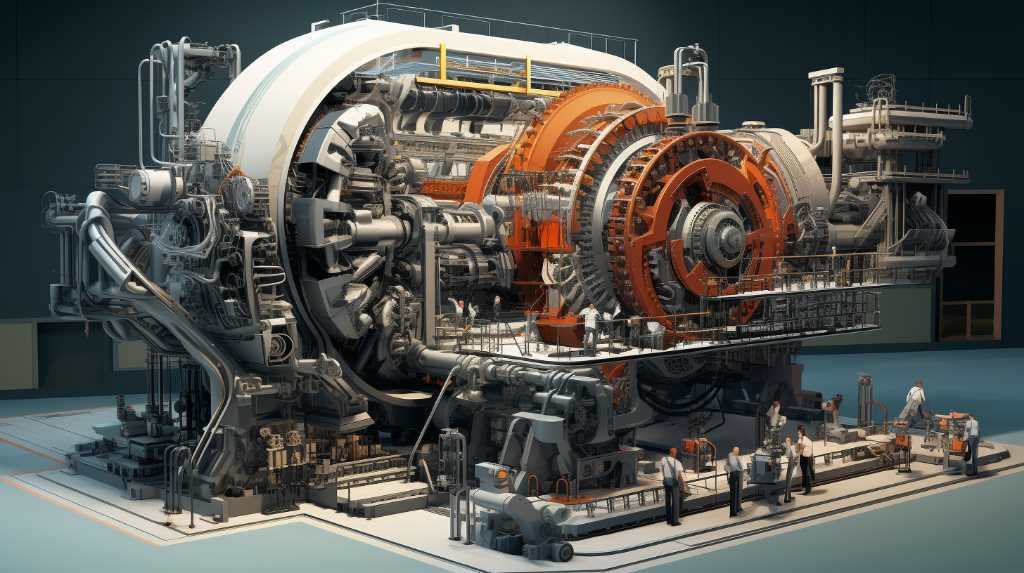Understanding Interesting Engineering
Interesting engineering refers to a multifaceted domain that encompasses various fields of engineering, including mechanical, civil, electrical, and software engineering. This term highlights the captivating and often transformative nature of engineering disciplines that merge creativity with practicality, resulting in innovations that significantly enhance our daily lives. The significance of interesting engineering becomes apparent when one considers its pivotal role in addressing real-world challenges through advanced technological solutions.
In this context, interesting engineering is not solely about the technicalities involved in the creation of structures, systems, or software; it also emphasizes the ingenuity and inventiveness required to push boundaries and explore new horizons. Engineering projects that embody these traits often lead to advancements that are both practical and awe-inspiring, showcasing the potential of human creativity when fueled by curiosity and a desire for improvement.
One compelling example of interesting engineering can be found in the development of smart cities, where engineers integrate advanced technologies to optimize urban functions. These cities use a network of interconnected devices and data analytics to manage resources efficiently, improving transportation, energy consumption, and public safety. Such projects demonstrate how engineering solutions can profoundly impact the quality of life for residents.
Another noteworthy instance is the use of renewable energy technologies in infrastructure projects. Engineers are designing innovative solar panels and wind turbines that harness natural resources, promoting sustainable energy practices. By transitioning to cleaner energy sources, interesting engineering plays a vital role in addressing the urgent issue of climate change.
The field continues to thrive as engineers around the globe collaborate to develop solutions that are not only functional but also environmentally and socially responsible. Through continued innovation and engagement, interesting engineering will remain at the forefront of technological and societal advancement.
Key Innovations in Interesting Engineering
Interesting engineering encompasses a variety of groundbreaking innovations that have significantly influenced various industries and enhanced our daily lives. Among these, 3D printing stands out for its transformative impact on manufacturing and design. This technology allows for the creation of three-dimensional objects directly from digital files. Industries such as aerospace and healthcare utilize 3D printing to produce intricate parts and personalized medical devices, showcasing its versatility and potential to reduce waste while fostering creativity in engineering.
Another area of noteworthy development is renewable energy solutions. As societies strive for sustainable practices, innovations in wind, solar, and hydroelectric power are increasingly crucial. These technologies not only reduce reliance on fossil fuels but also promote cleaner air and lower greenhouse gas emissions. The integration of smart grids into renewable energy systems allows for improved efficiency and energy distribution, underscoring how interesting engineering contributes to a more sustainable future.
Artificial intelligence (AI) represents a remarkable advancement within interesting engineering, operating at the intersection of computer science and cognitive psychology. AI applications range from natural language processing to autonomous vehicles, signifying its vast potential to enhance decision-making processes and efficiency across multiple sectors. Engineers today harness AI algorithms to solve complex problems, optimize designs, and improve user experiences, reshaping traditional approaches to engineering challenges.
Lastly, robotics has revolutionized various industries, including manufacturing, healthcare, and logistics. Advances in robotics engineering have led to the development of automated systems that enhance productivity and improve the quality of service. Innovations in robotic technologies, including drones and autonomous robots, are not only increasing operational efficiency but also expanding the horizons of what machines can achieve. These innovations emphasize the remarkable capabilities of interesting engineering in addressing contemporary issues.

The Role of Creativity in Engineering
Creativity plays a vital role in the landscape of interesting engineering, serving as a catalyst for innovation and problem-solving. Engineers are often faced with complex challenges that demand unconventional thinking and a departure from traditional approaches. This necessity to think outside the box transforms engineering from a strictly mathematical and scientific discipline into a vibrant field that embraces artistry and creativity.
The intersection of art and engineering is evident in various projects that highlight how aesthetic considerations can enhance functionality. For instance, the Sydney Opera House showcases a remarkable fusion of architectural beauty and engineering precision. Its iconic sail-like design not only captivates the viewer’s eye but also effectively responds to the building’s environmental conditions. Such examples believe that engineering is not merely the application of laws of physics but also involves a creative process that can reinterpret these laws in uniquely valuable ways.
Moreover, innovative engineering often involves interdisciplinary collaboration, where engineers partner with artists and designers to create extraordinary solutions. This collaboration results in projects that inspire and engage the public, such as interactive installations or sustainable infrastructure that harmonizes with natural landscapes. By integrating aesthetics into engineering, creative professionals can more effectively address human needs and environmental concerns.
The creative dimension in engineering also extends to the development of new technologies. Start-ups and research initiatives are increasingly blending engineering prowess with artistic vision to craft innovative products, whether it be in the realm of consumer electronics, renewable energy, or urban design. Such developments not only push the boundaries of functionality but also enrich user experiences, proving that interesting engineering is not limited to mere technical specifications, but rather a landscape where creativity thrives.
The Future of Interesting Engineering
The realm of interesting engineering is on the cusp of tremendous transformation, driven by emerging trends and groundbreaking technologies. One of the most notable advancements is the rise of smart cities, which utilize integrated digital and physical infrastructures to enhance efficiency and sustainability. These urban areas will leverage the Internet of Things (IoT) to optimize traffic flow, reduce energy consumption, and manage resources more effectively. Such innovations are not merely theoretical; numerous cities across the globe are already implementing smart technology, paving the way for future developments that can drastically reshape urban living.
Another critical area projecting remarkable growth is autonomous vehicles. With the potential to revolutionize transportation, these engineered marvels rely on complex algorithms and sensory data to navigate without human intervention. As self-driving technology continues to refine and regulatory frameworks emerge, we can expect significant on-road safety improvements and increased accessibility for individuals who are unable to drive. The influence of autonomous vehicles extends beyond personal transport; the logistics and delivery sectors stand to benefit immensely, promising faster and more efficient services.
Bioengineering is another captivating trend within interesting engineering that is gaining traction. It synergizes principles of biology and engineering to develop innovative medical solutions such as lab-grown organs, advanced prosthetics, and personalized medicine. As healthcare evolves with these technologies, we anticipate not only enhancements in treatment efficacy but also a broader societal acceptance of bioengineered solutions, leading to a fundamental shift in patient care.
The potential impacts of these advancements are profound, but they also call for proactive engagement from individuals interested in interesting engineering. As future engineers and innovators, it is essential to seek education and training in these fields, explore relevant career opportunities, and support innovative projects that align with personal interests. The future is bright, and active participation will ensure that the engineering solutions of tomorrow are as captivating and influential as those of today.
